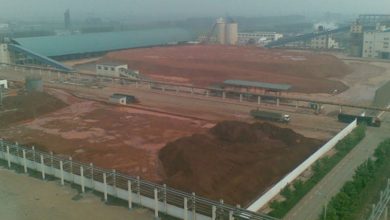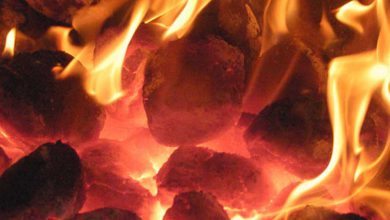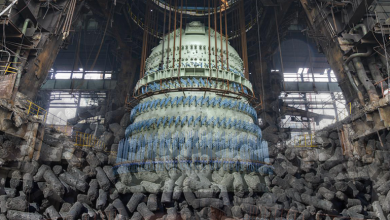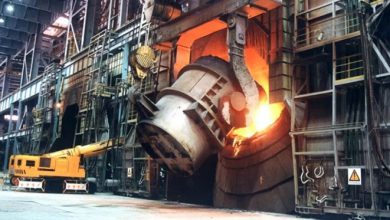What is gypsum and where does it come from
Gypsum is a mineral with a long history and a wide range of uses. As early as 4,800 years ago, the Great Pyramid of Egypt was made of gypsum as a binder. Pure gypsum smells like milky or chalky, but if the gypsum is impure, some impurities such as sulfur dioxide and other harmful gases will escape during the process of adding water and hardening the gypsum to release heat, resulting in a pungent smell.
Gypsum mainly comes from the mining of gypsum mines. This type of gypsum is called natural gypsum. There are two types, calcium sulfate dihydrate (CaSO4*2H2O) and CaSO4 II. Gypsum is not lime, they have some similarities and differences.
- The volume will change during hardening, but the volume of lime shrinks greatly, while the volume of gypsum expands slightly.
- Lime sets and hardens slowly, while gypsum is faster.
- Both have poor water resistance.
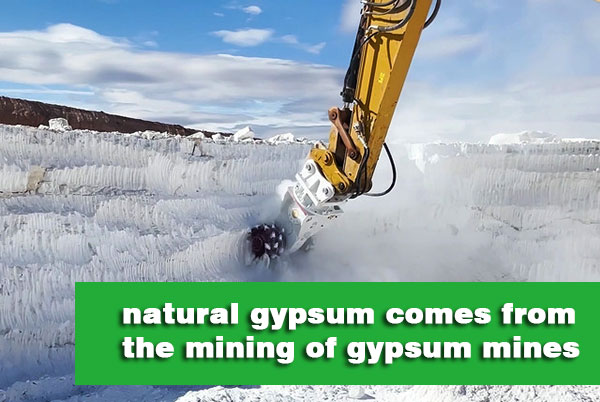
Is gypsum a silicate
Gypsum is not a silicate, but it is an additive in the manufacture of Portland cement (silicate cement).
Why gypsum is added to cement
Silicate industrial products are made from silicate at high temperature, mainly including cement, glass and ceramics. The main raw materials for cement production are limestone and clay. These raw materials are crushed and mixed according to a certain proportion and then calcined in the kiln at a temperature of about 1723K. After leaving the kiln, it is cooled to form granular clinker. After storing for 7-21 days, add gypsum with a mass fraction of 2% to 6% (to adjust the cement hardening time. Finally, grind the clinker into fine powder to become ordinary cement. Its main component is tricalcium silicate (3CaO· SiO2), dicalcium silicate (2CaO SiO2), tricalcium aluminate (3CaO AI2O3), etc.
Common gypsum used for briquetting
- Natural gypsum.
- Industrial by-product gypsum.
Industrial by-product gypsum refers to the by-product assembly discharged from industrial production with calcium sulfate as the main component, also known as chemical gypsum, synthetic gypsum.
By-product gypsum sources
According to their formation mechanism can be divided into the following categories
- Waste residues mainly composed of calcium sulfate dihydrate or calcium sulfate obtained by hydrolyzing calcium-containing minerals or organic calcium salts with sulfuric acid, such as phosphogypsum, fluorogypsum, mirabilite gypsum, boron gypsum, citrate gypsum, tartaric acid gypsum, lactic acid Gypsum and other organic acid gypsum, etc.
- Calcium sulfate dihydrate or calcium sulfate-based waste generated by the reaction of sulfate and calcium-containing compounds, such as chrome gypsum.
- Calcium sulfate dihydrate or calcium sulfate-based waste residue obtained by absorbing sulfur dioxide or neutralizing sulfuric acid with calcium carbonate or calcium oxide, such as desulfurization gypsum (DFG), titanium gypsum, etc.
- Calcium sulfate dihydrate precipitated from aqueous solution, such as salt gypsum.
- Waste gypsum products mainly composed of calcium sulfate dihydrate or calcium sulfate, such as ceramic waste mold plaster, waste gypsum board, etc.
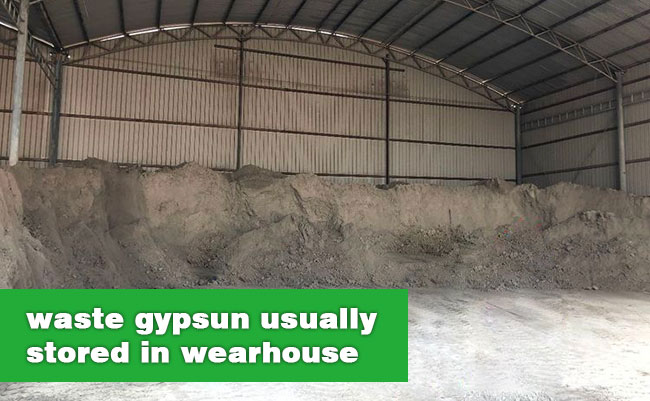
Why making gypsum briquette
- For the convenience of transportation
Long-distance transportation of wet industrial by-product gypsum is bound to waste energy, and the transportation of dry gypsum powder without special transportation equipment will cause dust pollution. Drying and granulating the by-product gypsum can change this situation.
- Process requirements for industrial application of gypsum
Except for natural gypsum, almost all industrial by-products of gypsum can be used in the manufacture of cement where it can be used as retarder after certain treatment. However, if the wet industrial by-product gypsum is not converted into briquette, agglomeration, fouling, clogging and other phenomena may occur during the production process and affect production. In some other applications, there will be granularity requirements, and turning these waste gypsums or gypsum powder into briquette is a good solution.
What is the best binder for gypsum briquetting?
No need of binder. Gypsum briquetting is a binder free process. No matter what kind of gypsum itself has good plasticity, relying on this plasticity, we can directly convert it into briquette by briquette machines.
However, the gypsum particles of some industrial by-products are full of air. For this type of gypsum, Maxton’s method is to remove as much air as possible before briquetting, so as to ensure the quality of finished briquette.
Is gypsum briquette making profitable?
This is a difficult question to answer. All over the world, various situations. Sources of raw materials, production costs and market demands are different. Only after a comprehensive investigation and understanding of the market can a more reasonable judgment be made.
If the raw material used is the by-product gypsum, the treatment of the raw material is also varied. For some types of by-product gypsum, it can be directly put into the production line of the briquetting process as long as the simple proportioning is carried out, and also some should go through a lot of processing to be dealt with before briquette work.
But in any case, the use of by-product gypsum for briquetting and further utilization is a good protection for natural gypsum, a non-renewable resource, and reducing the mining of natural gypsum is also an environment friendly behavior. Moreover, due to the convenience of the by-product gypsum, it can also save a lot of cost and energy in transportation.
What kind of briquette machine suitable for gypsum briquetting
Many types of briquette machines can be used for gypsum briquetting, roll press and extruder are the two most common machines for gypsum briquetting.
By using a roll press as the gypsum briquette machine the working way is as below:
The raw gypsum is evenly added to the hopper of the roll briquette machine through the quantitative feeder, and then these materials are forced into the equipment for briquetting. After briquetting, when the pair of rollers runs to the bottom, as the pressure decreases, the finished briquette will be demolded due to elastic recovery and self-weight.
By using roll press, gypsum briquettes of various shapes can be made, like pillow, square, strip, etc.
Other applications for gypsum besides briquetting
- For the production of plasterboard.
- Production of various gypsum products such as gypsum blocks, hollow slats, gypsum insulation boards, gypsum mold boxes, gypsum electromagnetic materials, etc.
- Used as road paving material.
- Agricultural applications: improving saline-alkali land, improving acidic soil, agricultural fertilizer production, etc.
- Used as chemical raw materials, such as the production of calcium sulfide and sulfur, the production of sulfuric acid co-production cement, the production of ammonium sulfate, potassium sulfate, etc.
- Mining: Used as filling gel material, used for filling and sealing in coal mines.
- Used in the production of gypsum ceramic materials.
- Production of gypsum whiskers and gypsum fibers.


